


Without a clear plan, things can quickly become chaotic and overwhelming. Imagine forgetting your doctor’s appointment because you have so much going on in your life that you can’t even keep track of. With a printable daily planner, you’ll find that it is easier to stay organized and plan ahead of time.
In this article, we will share 30+ printable daily planner templates and a free PDF version for download so that you can better manage your daily schedule, build healthy habits, and care for yourself better.
A daily planner is a tool that is used to help you organize your day and stay productive. It typically comes with different sections for you to fill in your to-do list, goals for the day, reminders, and any notes that you may have for yourself.
Whether it is for business, school, or simply for your own personal use, there are many benefits to using a daily planner to help you strike a balance in your life.
The main benefits of using one include:
You may also like: 30+ Free Printable Self-Care Planner Templates
Here is a list of 30+ daily planner templates. Below is a link to download these free printables. Feel free to print them out or save them on your mobile devices or laptops.
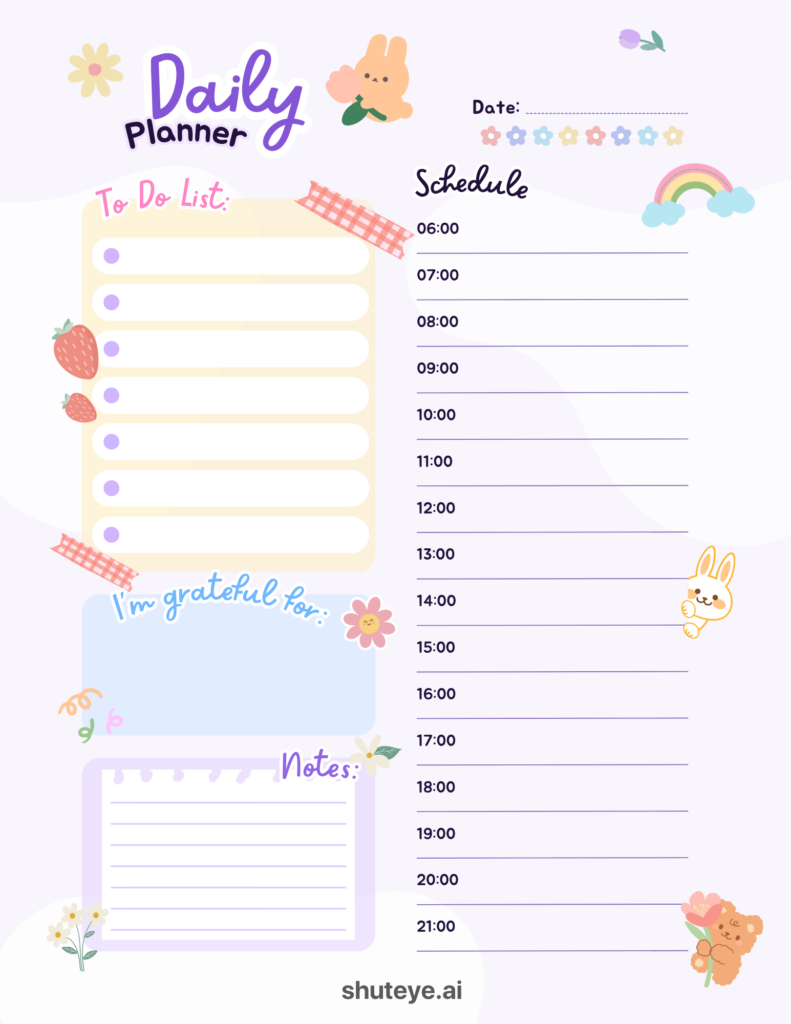






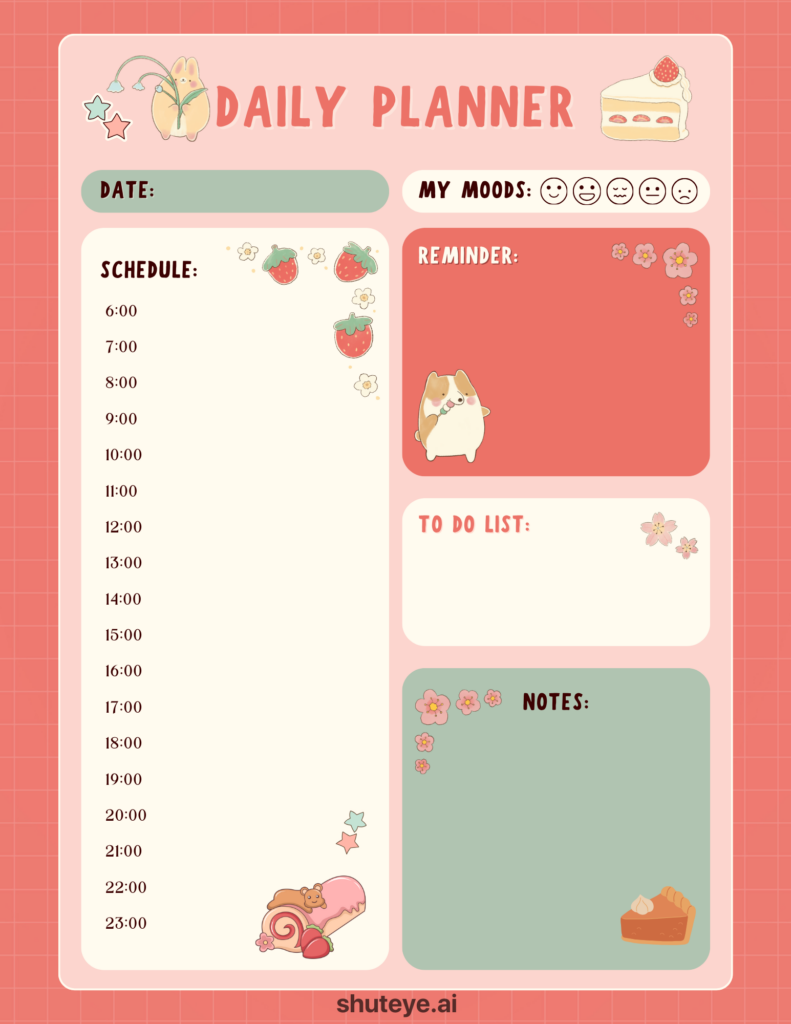

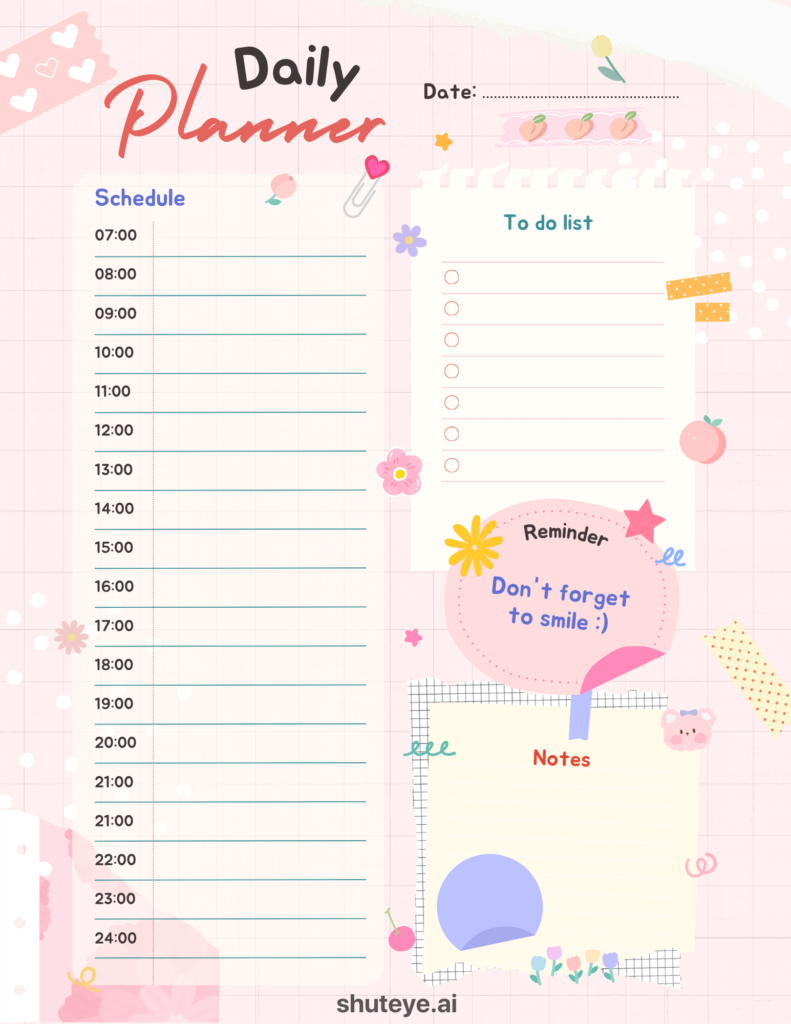











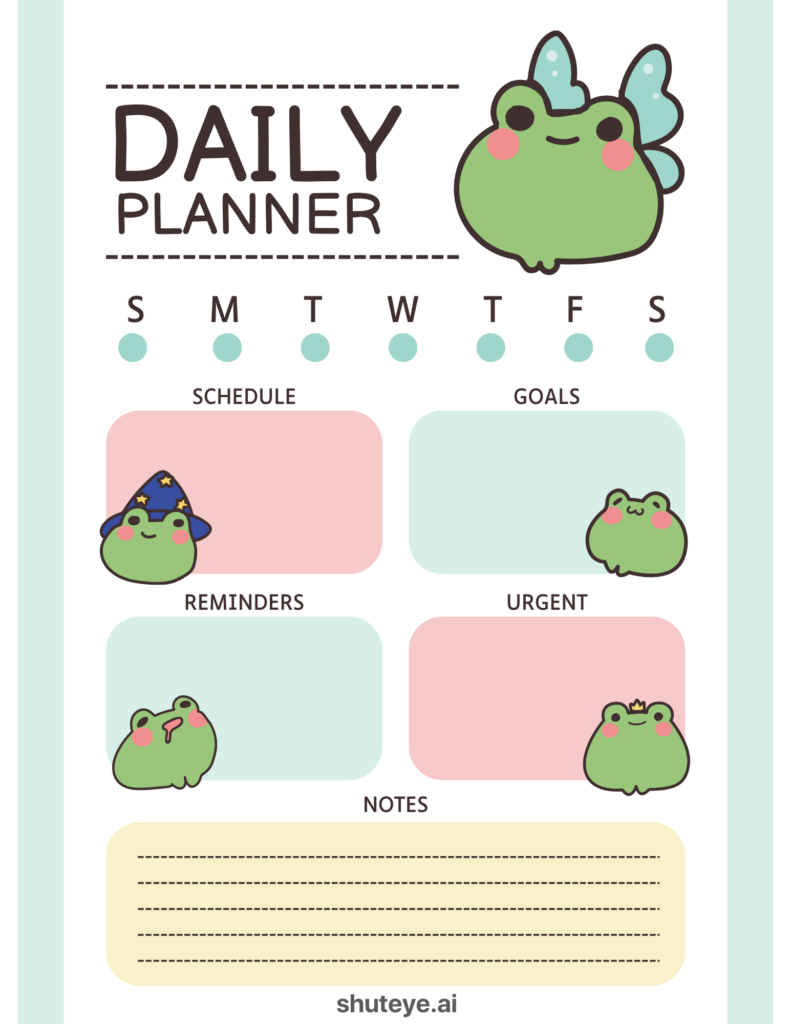




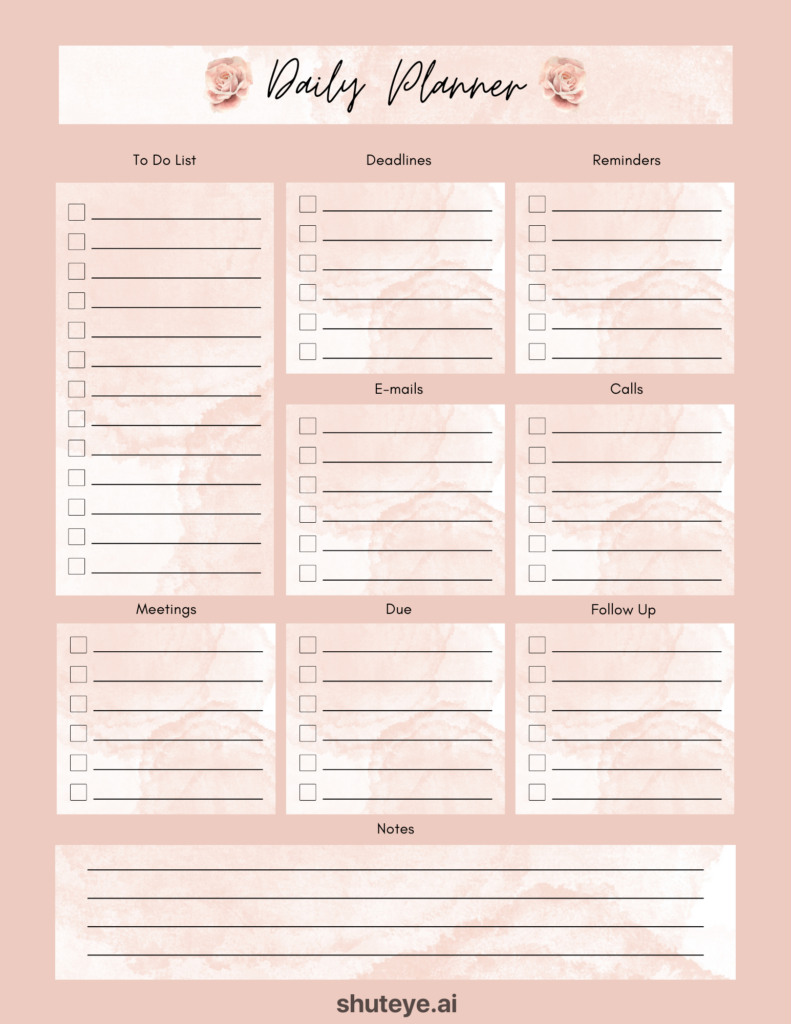



A good daily planner should contain elements that will help you stay motivated, organized, and productive throughout the day.
The main aspects that should be included in a daily planner are:
Using a daily planner is rather easy to do. What is tricky is turning it into a daily habit as habits are much simpler to form when we can see the immediate benefits of our efforts. It takes time and effort.
To help you get started, consider following these steps:
Divide your objectives into daily chores. You can’t put “Get in shape” on your daily to-do list, but you can put “spend 30 minutes on my Peloton” or “take a midnight stroll” on it. When you sit down to organize your day, think about your personal and professional goals, and add things that will help you achieve both.
Taking a step back and looking at your week as a whole is the first step in planning your day. You probably have several objectives, a variety of possible tasks to achieve them, and only so many hours in the day.
On some days, you might want to task batch and concentrate just on tasks connected to a single professional aim. You might also stack your personal goal tasks over the weekend. Zoom out and gently sketch your week on Sunday evening or Monday morning so you know which goals you’ll focus on and on which days. Keep the specifics in mind for your daily brainstorming sessions.
When most people organize their days, they begin with this step. They start with their scheduled appointments, necessary meetings, and pressing deadlines, then try to squeeze goal-oriented chores in between. Consider deferring this step until the conclusion. You’ll be forced to fit your must-do duties around your goal tasks rather than the other way around this way.
In an ideal world, we would only focus on everyday chores that help us achieve our long-term objectives. In reality, we have responsibilities and commitments to meet, some of which have no bearing on our personal or professional development. Reevaluate recurring meetings, consider distributing responsibility, and get comfortable saying “no” to as many commitments and obligations as feasible.
If you enjoyed reading this article, feel free to check out other resources that you can use. Be it to track your finances, help you stay productive in school, or plan out the year ahead.
30 Best Free Student Digital Planner Templates
20+ Free Printable Budget Planner Templates (2024)
15+ Best Free Printable Yearly Planner Templates
30+ Free Printable Self-Care Planner Templates
Therefore, when it comes to arranging your day, ensure that you are planning it in such that is it realistic and will keep you motivated and productive. That way, you build healthy habits that last for weeks, months, and years.
Building ShutEye® app can help you to do it efficiently, specifically for sleep. ShutEye® is a patented sleep-tracking app that analyzes your sleep cycle each night, providing you with personalized sleep reports and sleep tips.